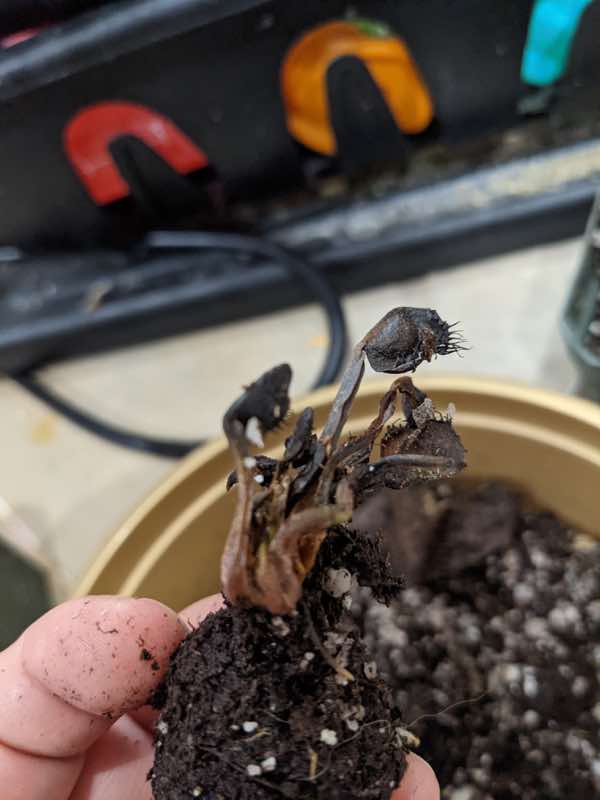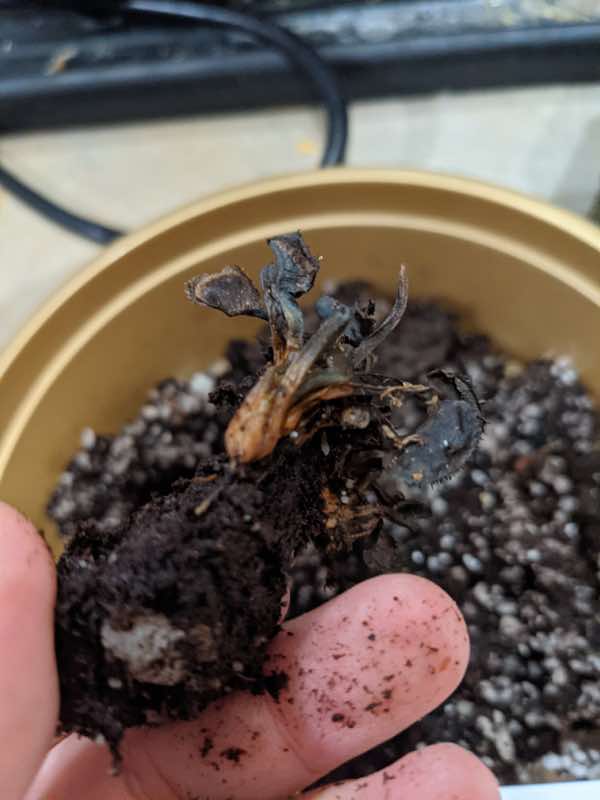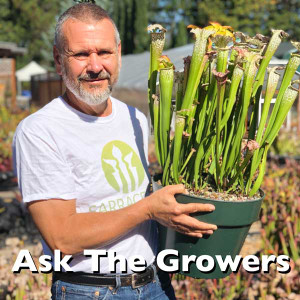February 22, 2023
Q/A #39 - Flytraps Need Special Care for a Colorado Winter
QUESTION:
I have a Dente and Red Dragon Flytrap, and I live in Denver, CO. I hope I'm wrong, but can you please tell me if they are dead? Their rhizomes look brown and mushy. I fear they may have frozen to death, even though I did my best to protect them from the really cold nights. I kept them outside on my sunny back porch, used distilled water, and kept them in my garage when the temperature dropped below freezing, at least I tried to. There were some nights that I forgot to check the temperature and I fear it was one of those nights that ended up killing my plants. This is my 3rd batch of VFTs and none of them have survived. I think the Colorado climate is too harsh. It's super dry during the summer and bitter cold during the winter.
(Submitted in February 2021.)


RESPONSE BY JEFF DALLAS:
I'm afraid they're dead. The climates in the high desert and high elevation tend to be some of the most challenging for temperate carnivorous plants. If you want to give it one more shot, try just growing on in a windowsill in winter. They will be fine outdoors in summer, even in a dry climate. We have a customer who grows Venus flytraps outdoors in Phoenix, AZ. I'm pretty certain that if his plants can survive the summer heat and dryness in Arizona, your plants can survive the summers in Colorado.
Winter is a different story. It's not the freeze by itself that kills plants. We grow flytraps and other temperate plants outside at our nursery throughout the year. We get temperatures down to 20°F (-7°C) during most winters. The coldest it got was 7°F (-14°C) in December 2009. Plants froze completely solid, and they came back the following spring.
What kills most plants in winter is dehydration or freeze drying. It's important to make sure the soil is always thoroughly moist and protected from freezing wind. Another factor is frequent large temperature swings. For growers in zones 6 and colder, this is a common problem. This is why we recommend mulch or some type of insulation to protect from rapid and frequent temperature changes. Moving the plants to a garage whenever a freeze comes around and bringing them back outside doesn't cut. The soil temperature needs to be as stable as possible throughout winter.
Since you would have only a small collection of flytraps. overwintering your plants on a windowsill is perfectly fine. After a series of frost and your plant is dormant (around early November), bring your plant indoors. Place the pot as close to the window pane as possible, even touching it. It will be cold enough for dormancy, but not so cold as to freeze it out. A south or west facing window is best. Make sure there aren't any trees, houses or big overhangs that would obstruct direct sunlight. Also keep the plant away from heat vents. This is important! The soil needs to be damp, but not in standing water. Just avoid having the soil dry out completely.
In spring, after the risk of frost has passed, bring your plant outdoors in full sun. For your area, this might be in mid to late May. Keep your plants in no more than an inch of standing water. As long as they have water and full sun, they'll be happy.
We recommend this overwintering technique only for folks in zones 6 or colder. Folks in warmer climates often fail with windowsill growing because winters are too warm to pull this off, and not having a sunny enough window is often a problem.
You can read more about this technique in our digital download, the Ultimate Carnivorous Plant Guide for Beginners.
• The original question and response have been edited for publication.
• With a database of thousands of questions, we will post a Q&A every few days or so.
• To search for similar posts, click on a hashtag below or use the site's search function.
• To submit a carnivorous plant question, visit Ask the Growers.

